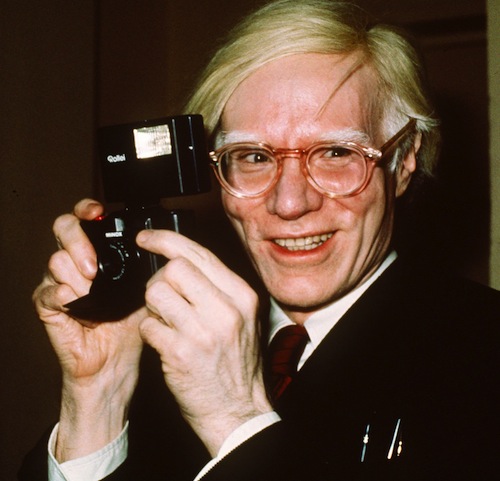Megan Volpert Becomes Andy Warhol

Over at Lambda Literary, Megan Volpert talks Andy Warhol with Charles Jensen and describes the process of writing her recently published Sonics in Warholia.
Here's a taste:
Like Warhol himself, the book puts focused scrutiny onto common, mundane, or commercial elements from popular culture. In the first section, you use the conceit of a mix tape, with its purposeful linking of song to song, as an overarching means to explore what are often surprising connections between Andy Warhol and elements as disparate as Mick Jagger, “Mack the Knife,” Devo, Lady Gaga—as you say, “Andy, please enjoy your 58 years boiled down to fifty-seven minutes and fifty-one seconds.” Sonics in Warholia is like a giant prose mix tape that links up eight tracks not by narrative, but by theme. How did you go about establishing the form for this book, and then, more importantly, sequencing all its parts into a work that remains so cohesive?
Well, this has partly to do with what I said before about the experience of total immersion in Andy’s universe. To a large extent, I simply did what people were doing in New York during Andy’s lifetime—playing six degrees of Andy Warhol. I would start by thinking that I’d really like to talk about motorcycles, and then work backward to Lou Reed, to the Velvet Underground, to Andy. In my mind, this trope of the motorcycle would be simmering with various pet theories and bits of my own history, and then I’d read one or two of the fifty books about Andy that I had been gathering. So, I have a couple of hot spots like the bike and Lou, and then I’d just let the dotted lines form as I was sifting through whatever massive data pile aggregated out of the random Warhol book I was reading at the time. Generally, I would spend two months letting all of this marinate together, then I would spend a six or eight hour stretch on a Saturday morning putting the whole thing down, cutting and pasting various bits until the piece felt orderly—not unlike my approach to writing papers in grad school. There was only one case where I deviated substantially, and in that instance I suddenly found myself working on an outline—quite a good poem type thing on its own, now that I think about it.
As for the sequencing, I gave it no thought whatsoever until I had enough pieces for a book. I knew the bookends—what piece went first and what piece went last—pretty much the entire time. But the middle was a blur. I knew that there was no use trying for chronology, though I did somewhat hold out hope for grouping by artistic medium—the ink drawings, then the screen prints, etc. At some point, it just became obvious to me that the arch of the story was located in its evolving tone of distrust, accusation and paranoia, so I arranged the pieces in a way that would go from treating Andy as apotheosis to treating Andy as asshole. I most likely owe this insight to Bob Colacello’s book, Holy Terror, which was actually the first book I read for this project. In the end, I had to circle back to it. Colacello and Koestenbaum were my touchstones.
We'd certainly love to read that Warhol outline-poem-type-thing!


